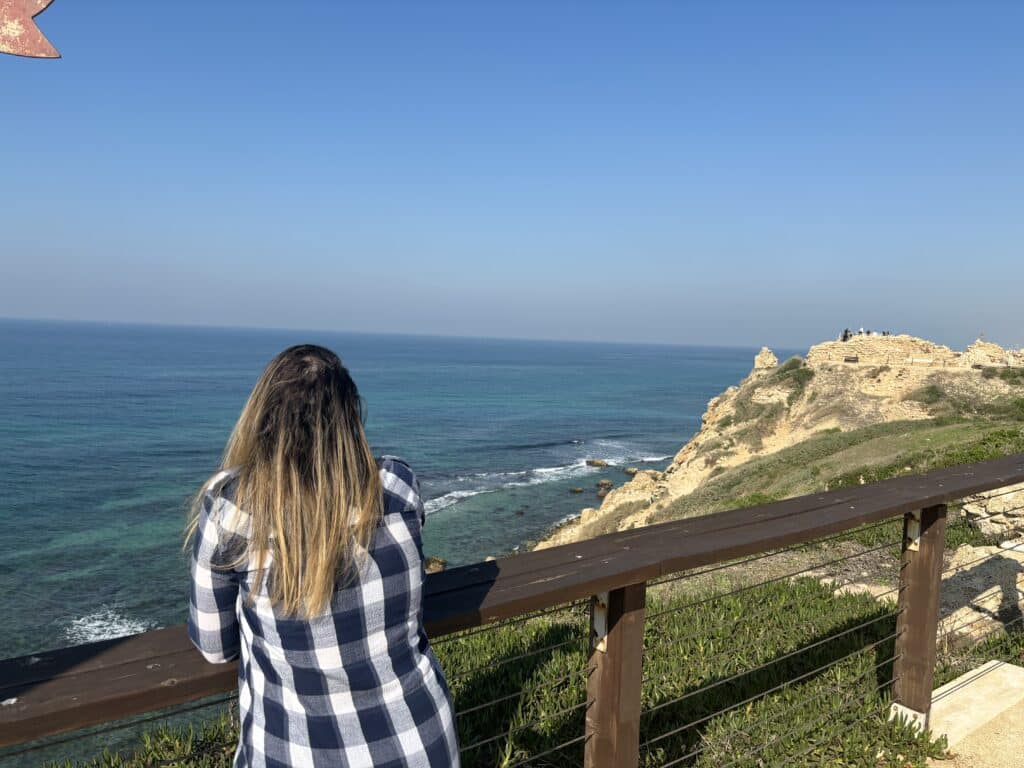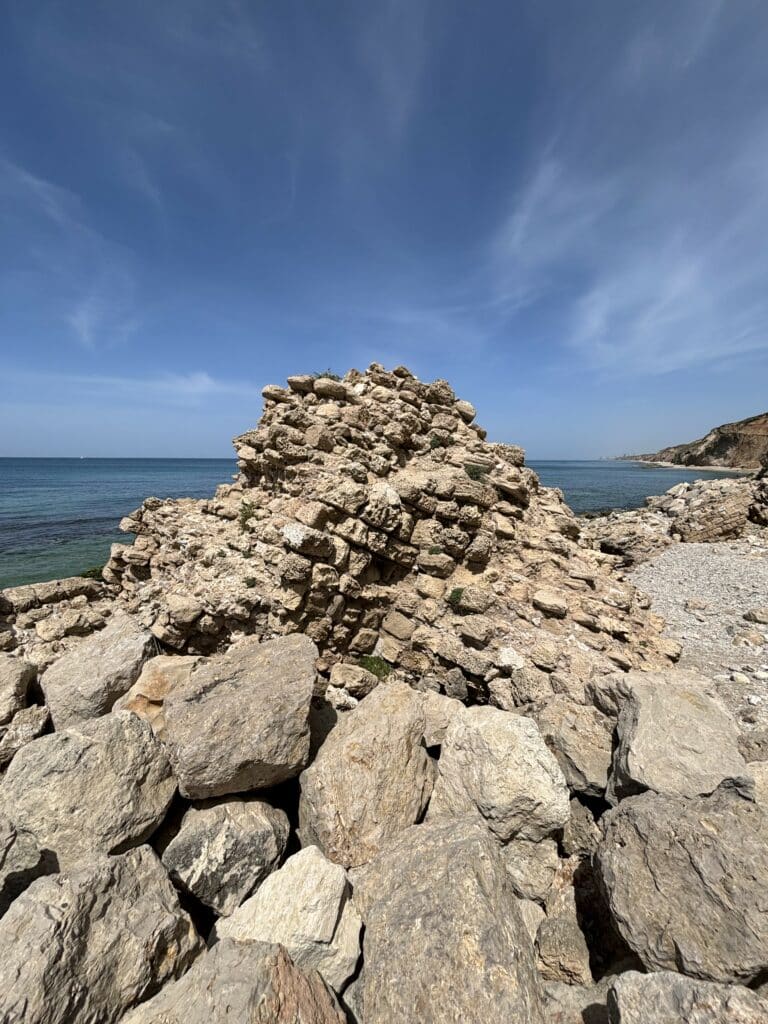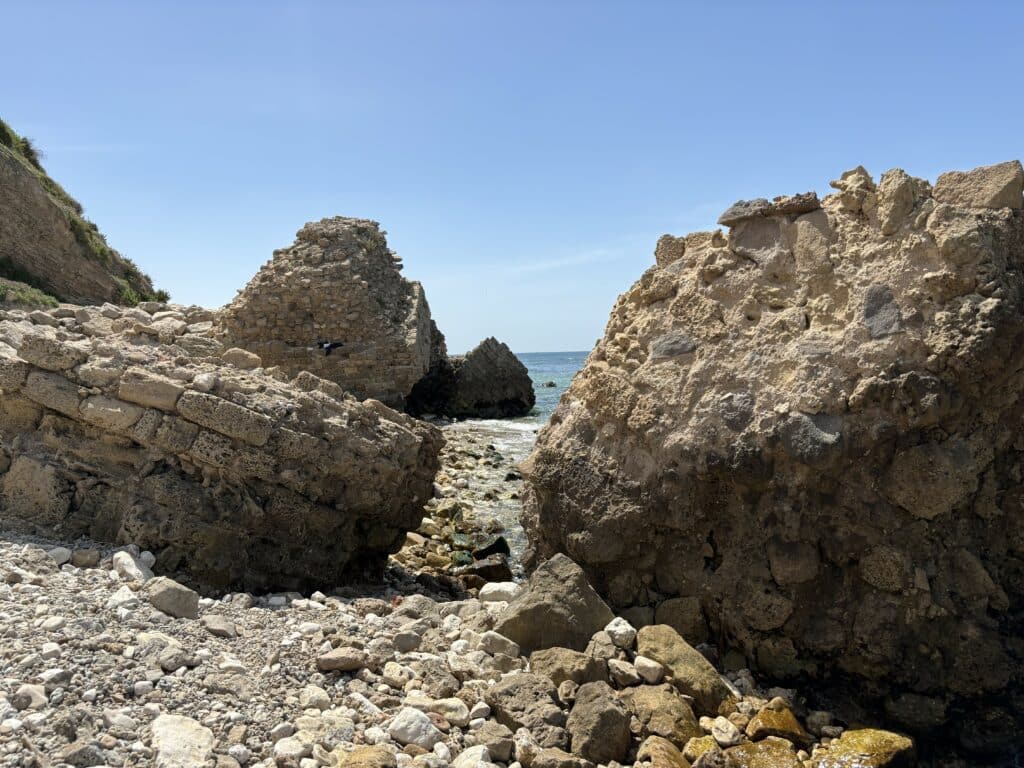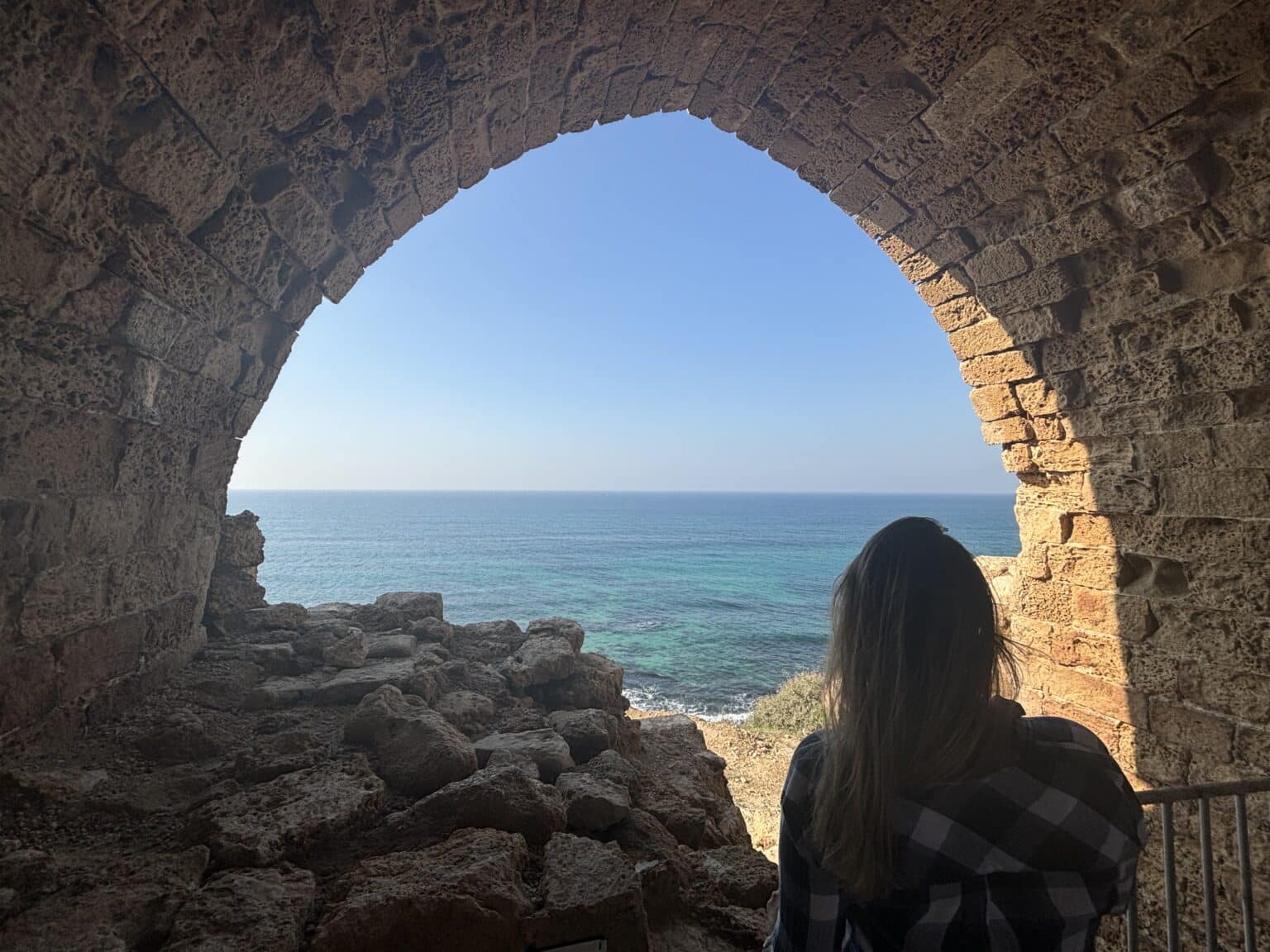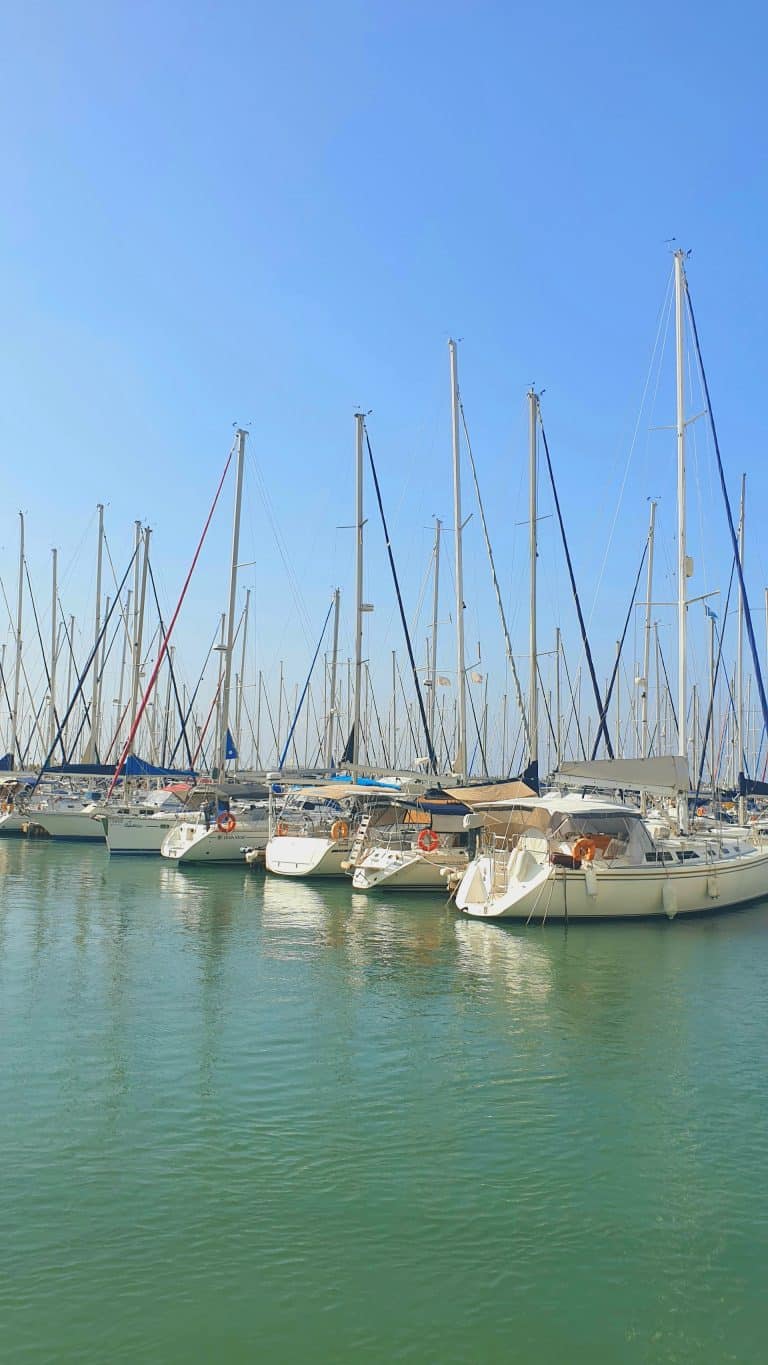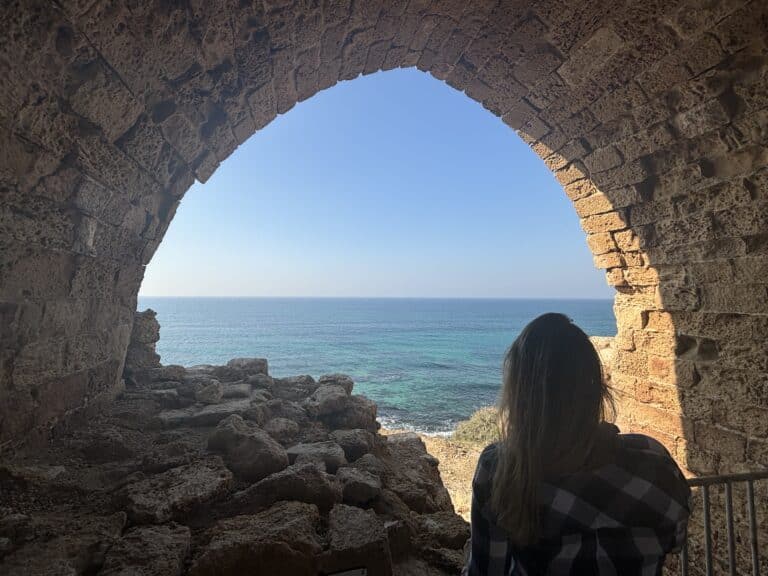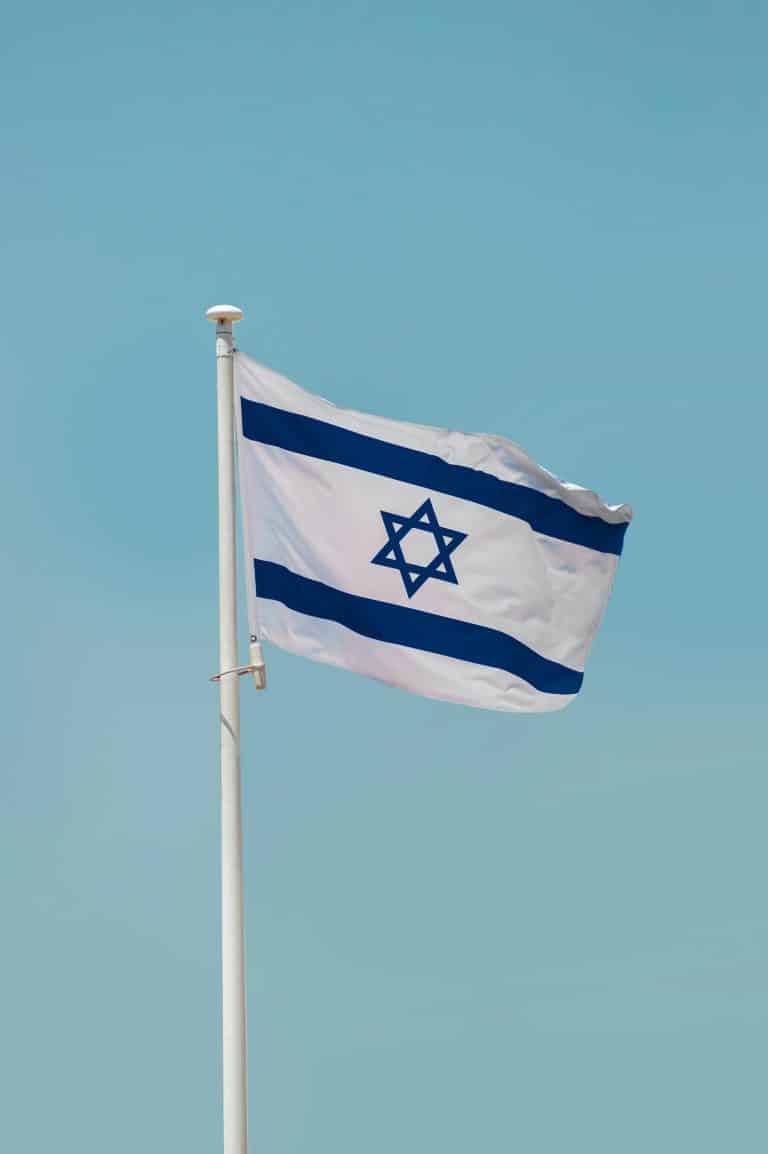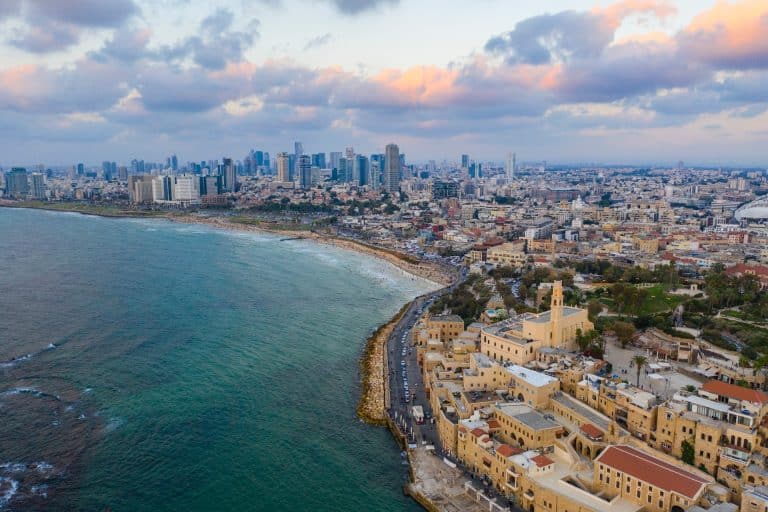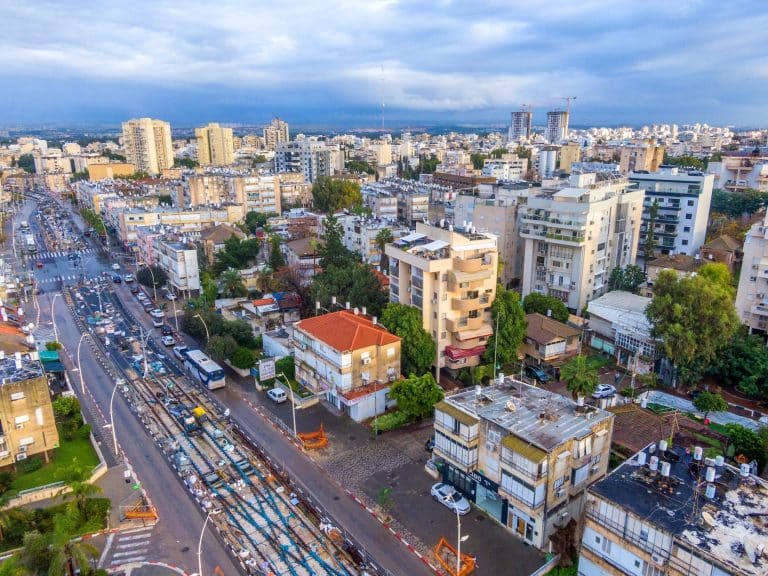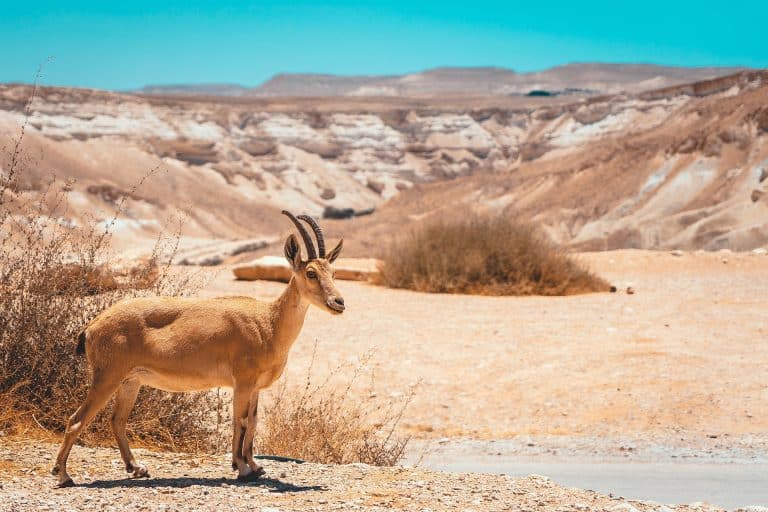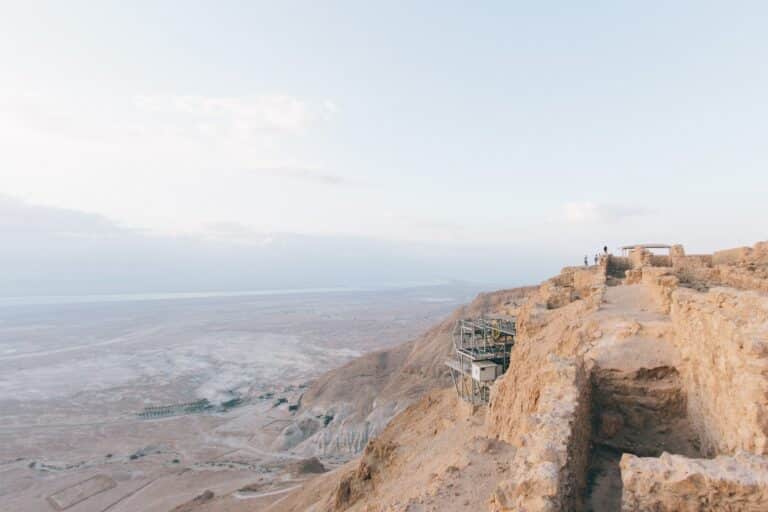Exploring Apollonia
Apollonia National Park is accessible to the public by Israel’s Nature and Parks Authority, who operates it. When you get there, you can explore the place by walking on a short trail of about a kilometer long. On your way you will see stunning views of Herzliya’s beach and the remains of a Crusader citadel, including a cistern, a wall, and other archaeological relics from the Crusader period scattered along the path.
Entrance requires a fee, and there is a designated parking area. The trail is accessible for wheelchairs and wheelchairs are available for loan to tour the site. The main trail is suitable for families with children and strollers. However, the ancient fort’s floor consists of either a cemented base or original ancient stone pavers. Not very wheelchair or strollers friendly.
At the beginning of the trail there is a traveler’s service center where you can purchase food and drinks, as well as receive a brochure with all the relevant information about Apollonia and the different trails. If you wish to sit, eat and enjoy the view, there is a very nice picnic area. Although seating is limited due to the few benches available. The site also has restrooms, and an observation deck where you can enjoy the view.
When to visit?
We particularly recommend visiting during the spring, when the blossom is at it’s pick and the birds are visiting! On clear days, you can see Jaffa and Netanya across the way, and from a bird’s-eye view, the beautiful beaches of Herzliya.
Most of the path lacks shade, so we advise to visit in the early morning or late afternoon.
If you wish to celebrate Bar Mitzvahs, Bat Mitzvahs, and wedding ceremonies (Huppah) in a inique place in Israel – this site can be a great choice. The celebrations are permitted (by prior arrangement), you can check the availability here.
Apollonia’s History
The Park is located on the Kurkar cliff, rises to a height of up to 30 meters above sea level. Apollonia has a unique natural features, beautiful views, and rich heritage. This heritage includes remnants of settlements and cities from the Persian period in the 6th century BC, extending through Hellenistic, Roman, Byzantine, early Islamic, and Crusader periods. In 1265, after the Mamluk Sultan Bibers conquest the city, it was destroyed and has since remained uninhabited. During the late Islamic period, the residents moved to the area near the Sidna Ali Mosque.
In 1942, the Sidna Ali Police Station was established, tasked with sea surveillance and preventing the arrival of unauthorized ships. While its structure is visible from Apollonia, it now forms part of the Mitzpe Yam youth institution and is not open for visitation. In 1948, during the war, the village’s inhabitants evacuated. The mosque underwent restoration in 1990 and is currently an active Muslim house of prayer.
In the 1950s, a military industry plant was established in the eastern section of the park, over archaeological remains. This decision was influenced by the belief that areas close to the sea were less suitable for housing. During the attacks from the sea between 1971 and 1979, Israel set up a network of radar stations along the coast, including one on this cliff.
South of Sidna Ali National Park lies Rashef Camp, formerly a training center and Herzliya Municipality’s overnight parking area. There are ongoing discussions about its future role, but a final decision has yet to be made.
A journey through the years
It is fascinating to consider how different residents throughout history related to the sea. The Phoenicians and Crusaders, for example, valued sea travel highly. The Romans constructed a villain Apollonia, ideal for seaside living. The Byzantines developed a glass industry using sea-derived materials. The Muslims and the British, fearing sea-borne enemies, constructed responsive buildings: the former built a mosque and hosted gatherings, partly to monitor the sea for European invaders, while the latter erected a Tygart fortress. The Israelis, focusing on defense, established both a manufacturing plant and a radar system to detect terrorist ships.
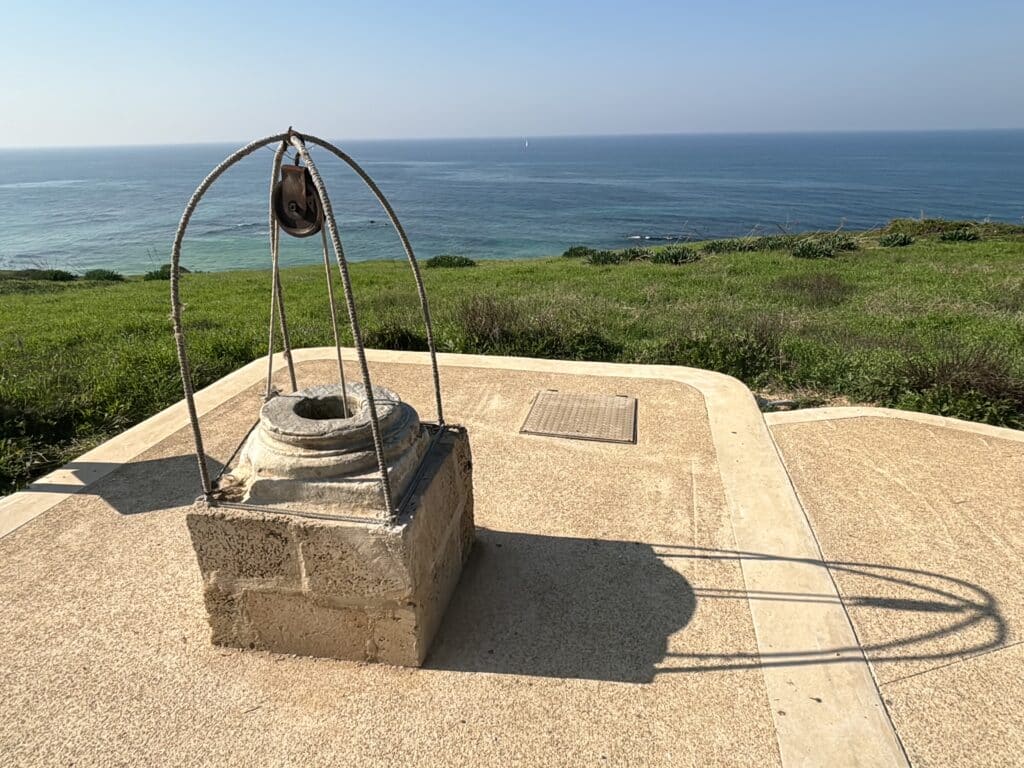
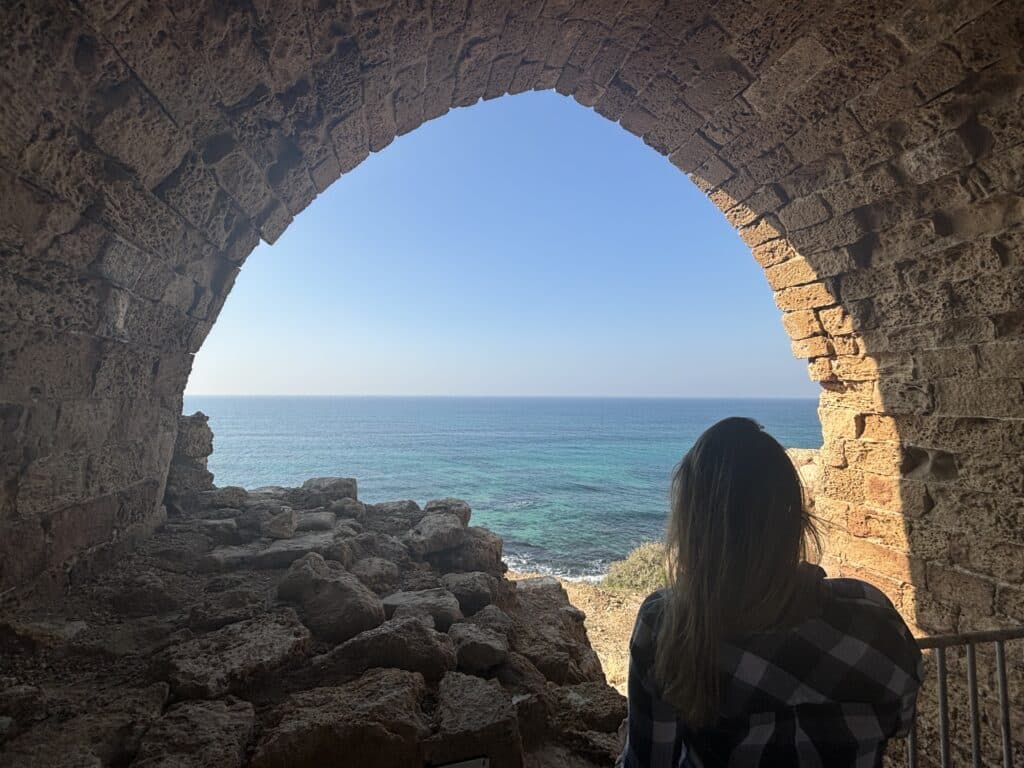
Walking trails
The Ancient Baths Trail (Orange)
Our journey often begins at the visitor’s center: The orange markers guide us along a path of so much history. It leads to the winter pool, a s great spot to observe Apollonia’s birds and local gazelles. It’s especially buzzing during winter and spring time. The trail then curves south, bordered by the Mediterranean Chaparral habitat—a slice of the coastal plain.
The Gazelle Trail (Green)
As locals, we find solace in the Gazelle Trail, which meanders west through the ficus woods. The path descends into the Mediterranean coastal chaparral until it reaches the Reshef Pool. This is where we pause to watch the gazelles and listen to the symphony of birds that frequent the pool, a moment of harmony with nature that we always enjoy.
The Cliff Trail (Gray)
For a panoramic view that captivates the soul, the Cliff Trail is unmatched. Starting from the Apollonia fortress, it stretches northward on a wooden deck above the sandstone cliffs. To one side, the endless blue of the sea; to the other, the conservation area that shelters our flora and fauna. It’s a place to learn about the park’s rehabilitation efforts and to witness gazelles and migratory birds find respite among the cliffs and dunes.
The Richard the Lionheart Trail (Purple)
This trail takes us past ancient sycamore and olive trees, alongside which our local bees thrive. It’s a path that not only offers shade and sustenance but also tales of historic battles and civilizations that once crossed swords where we now walk with peaceful intent.
The Archaeological Trail (Brown)
For those of us fascinated by the footprints of the past, this trail is a journey through time. It passes through archeological wonders from residential buildings to ancient ports that remind us of the rich tapestry of human endeavor that has shaped our land from the Greek era to the time of the Crusaders.
The special sandstone in Apollonia
The word “kurkar” originates from Arabic and refers to a type of sandstone. This sandstone is formed from sand grains that settle and form dunes, later undergoing a process of crystallization with calcareous skeletons from shells and corals. The ridges found on the coastal plain were initially migrating dunes adjacent to an ancient shoreline, which later recrystallized into rocks.
Kurkar rock allows water to seep through quickly, hence, only plant species adapted to this water system can thrive on it, leading to a prevalence of tuber and onion plants. Kurkar is relatively rare globally; the Levantine coast and Cyprus, stretching from Sinai in the south to Turkey in the north, are its primary locations. As a unique habitat, the kurkar supports exclusive plant life, including endangered species like the aircreeper.
Kurkar has been used for centuries as a building material in the Mediterranean region. In Israel, the Kurkar Ridges, extending from the northern Negev to Rosh Hanikra, are among the most threatened habitats due to their location in densely populated areas. This location is exposing them to various development pressures such as urban expansion, infrastructure development, road construction, agricultural use, and more. It is estimated that less than one percent of these ridge areas remain as open, undeveloped land. Additionally, natural erosion causes the cliffs to crumble into the sea.
In the vicinity of Apollonia National Park, there was formerly an IAS factory that caused significant environmental damage before closing in 1996. Efforts have been underway in recent years to rehabilitate the lands around the factory site (see Appendix C for details). Preserving the kurkar is crucial due to its beneficial properties.

Apollonia Through the Ages
We will examine the remnants from the Roman, Byzantine, and early Islamic periods through a bird’s-eye view. Eeach historical period has distinct characteristics, and the prevailing culture of each era also influenced the city’s name:
Arshaf – The Phoenicians: The Phoenicians, a seafaring people from Lebanon, settled in Israel during the Persian period, between the 4th and 6th centuries BC. They named the place ‘Arshaf’ after the Phoenician god of storm and war, Reshef, whose name signifies fire, spark, or flame. (For more on the Phoenicians, see Appendix A).
Apollonia – The Hellenists: In the 4th century BC, the Hellenists conquered the Land of Israel. Like the Phoenicians, they named the city after one of their gods, Apollo. So – ‘Apollonia’ means the city of Apollo. Apollo was revered as the mediator between humans and gods.
Apollonia – The Romans kept the name and the city continued to be known as Apollonia during the Roman period.
Sozusa – The Byzantines: In 313 AD, when the Roman Empire, which also ruled Israel, declared Christianity as the official religion. It was concidered inappropriate to retain the city’s pagan name. That’s why the Byzantines called the city ‘Sozusa’ meaning ‘the city of the Savior’, referring to Jesus. During this period, the city was expanding to approximately 70 acres. It was quite a successful place, it had a boat dock, agricultural produce, and a glass industry.
Arsuf – The Muslims: In the 7th century, Muslims conquered the city and reverted to the name associated with the Phoenician god Reshef.
Arsor – The Crusaders: In 1101, the Crusaders captured the city with a formidable fleet, slightly altering the Muslim-Phoenician name. They constructed a fortress in and around what they called ‘Arsor’, a variant of the city’s former names.

